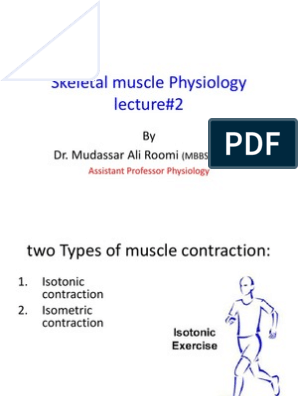HEMOSTASIS AND BLOOD COAGULATION
DEFINATION
Prevention of blood loss from a traumatized blood vessel
�Mechanism of Hemostasis
Vascular constriction Formation of platelet plug Formation of blood clot Growth of fibrous tissue
�Vascular constriction
1. 2. 3.
Traumatized blood vessels causes smooth muscle of blood vessels to contract by Local myogenic spasm Local autacoids factors Nervous reflexes
�PLATELETS
Thrombocytes formed from Megakarocytes Normal concentration 150,000 to 300,000 Half life of 8 to 12 days Its membrane contains phospholipids and it is coated by Glycoprotein Don't have nuclei
� 1. 2.
3. 4. 5. 6. 7.
Cytoplasm contains Actin, myosin and thrombosthenin Residual of endoplasmic reticulum and golgi apparatus Mitochondrial enzyme system Fibrin-stabilizing factor Growth factor Prostaglandins synthesizing enzymes Thromboxane A2 ( Vasoconstrictor)
�Formation of platelet plug
1.
2.
3.
4.
5.
Minute ruptures from small blood vessels Contact of platelet with damaged vascular collagen fibers Platelet swell, protruding pseudopods, contractile protein causes release of granules Becomes sticky with collagen and to a protein called Von Willebrand factor Secretes ADP and Thromboxane A2 which activates other platelets and formed platelet plug fibrin threads makes unyielding plug
�������Formation of blood clot
CLOTTING FACTORS
�INTIATION OF COAGULATION
EXTRINSIC PATHWAY
�INTRINSIC PATHWAY
�FORMATION OF BLOOD CLOT
�Composition of blood clot 1. Meshwork of fibrin fibers 2. Blood cells 3. Platelets 4. Plasma Clot Retraction With in 20 to 60 minutes clot retracts and expresses fluid devoid of fibrinogen and other clotting factors called SERUM Platelets Thrombin Ca++ Vicious circle of clot formation
�Growth of fibrous tissue
1.
2.
After clot is formed it can Invaded by fibroblast which form connective tissue It can dissolve When a clot is formed it entrapped a plasma protein named as PLASMINOGEN that is activated by TISSUE PLASMINOGEN ACTIVATOR (t-PA) to PLASMIN after few days. That digest fibrin fibers, factor I,11,V,VIII,XII
�INTRAVASCULAR ANTICOAGULANT
1.
2. 3.
ENDOTHELIAL SURFACE FACTOR Smoothness (intrinsic pathway) Layer of Glycocalyx Thrombomodulin Binds Thrombin Activates protein C (V and VIII)
�FIBRIN FIBERS Prevents spread of thrombin ANTITHROMBIN III Inactivates thrombin HEPARIN Binds with antithrombin III Factor XII, XI, X, IX
�ANTICOAGULANT FOR CLINCAL USE
HEPARIN I.V 0.5 to 1 mg/kg of body weight Increases clotting time to 30 minutes Action lasts for 1.5 to 4 hours Destroyed by enzyme known as Heparinase COUMARINS Warfarin Factor II, VII, IX and X levels decreases Inhibits VKOR c1 Vitamin K not in active reduced form
�
1.
OUTSIDE THE BODY
SILICONIZED GLASS CONTAINERS Prevents contact activation of platelets and factor XII 2. HEPARIN 3. DECREASES Ca ion CONCENTRATION Oxalate compounds Citrate compounds Citrate are better than oxalate, removed from liver But in large quantities and liver failure can lead to TETANY and CONVULSIVE DEATH
�FACTORS RESPONSIBLE FOR INCREASE BLEEDING TENDENCY
1.
2. 3.
VITAMIN K DEFICIENCY
Fat soluble Bacterial intestinal flora Cause is decreased absorption of vitamin k from intestine as seen in obstruction of bile II, VII,IX, X and protein C (V, VIII) Liver carboxylase that add a carboxyl group to glutamic acid residues Role of VKOR c1 Treatment is IV vitamin K
4. 5.
6. 7.
�HEMOPHILIA
1.
2.
1.
Genetically transferred through female chromosome and occurred more exclusively in males. Bleeding occurs from larger vessels Hemophilia A or Classic hemophilia Smaller component of factor VIII Responsible for intrinsic pathway of coagulation Von Willebrands disease Larger component of factor VIII
�Hemophilia B 1. Due to deficiency of factor IX Treatment Injectable purified factor VIII Recombinant factor VIII Fresh frozen plasma
�THROMBOCYTOPENIA
Very low number of platelets Bleeding occurs from small blood vessels Small punctate hemorrhages through out the tissues Purplish blotches on skin (Thrombocytopenia Purpura) Frequent bleeding occurs when platelet count decreases to 50,000/L IDIOPATHIC THROMBOCYTOPENIA Fresh whole blood transfusion Splenectomy
�THROMBOSIS AND EMBOLISM
THROMBUS Abnormal clot formed in blood vessels Types of thrombus 1. Arterial thrombus 2. Venous thrombus EMBOLI The floating clot in blood Massive pulmonary embolism
�Causes 1. Any roughened endothelial surface of vessels 2. Stasis of blood Treatment T-PA genetically engineered
�DISSEMINATED INTRAVASCULAR COAGULATION (DIC)
1.
2.
1.
2.
Widespread of clotting mechanism in the circulation CAUSES Large amount of traumatized or dying tissues causes release of tissue factor Widespread septicemia (endotoxin) EFFECTS Septicemic shock Bleeding
�Blood Coagulation Tests
Bleeding Time 1 to 6 minutes Clotting time 6 to 10 minutes
�Prothrombin Time
1.
2.
3.
4. 5.
6.
Removal of blood Addition of oxalate Addition of large quantities of Ca and tissue factor Activation of extrinsic pathway Normal prothrombin time is 10 to 12 sec factors I, II, V, VII, and X
�International Normalized Ratio
Different individuals have different tissue factor activity INR is advised INR= (PT test )ISI (PT normal) International sensitivity index 1.0 to 2.0 Normal INR= 0.9 TO 1.3
�Partial Thromboplastin Time (PTT) OR Activated Partial Thromboplastin Time (aPTT or APTT)
1. 2.
3.
4. 5. 6.
Performance indicator measuring the efficacy of both the Intrinsic and the common coagulation pathways. Removal of blood Addition of oxalate Addition of large quantities of Ca and Phospholipids Activation of intrinsic pathway Normal PTT time is 25sec to 32 sec factors: I, II, V, VIII, IX, X, XI, & XII.





















































































































